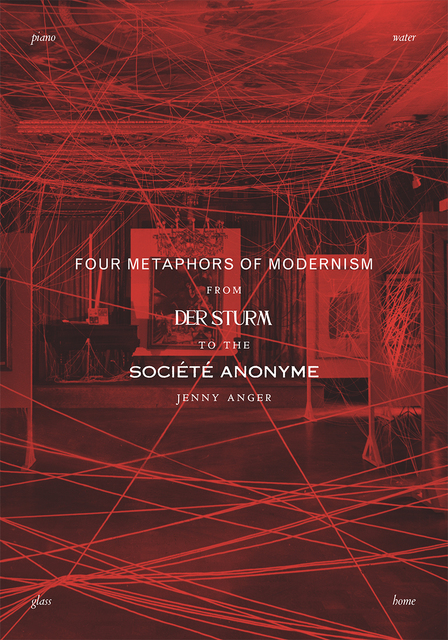Four Metaphors of Modernism
From Der Sturm to the Société Anonyme
“Where do the roots of art lie?” asked Der Sturm founder Herwarth Walden. “In the people? Behind the mountains? Behind the planets. He who has eyes to hear, feels.” Walden’s Der Sturm—the journal, gallery, performance venue, press, theater, bookstore, and art school in Berlin (1910–1932)—has never before been the subject of a book-length study in English. Four Metaphors of Modernism positions Der Sturm at the center of the avant-garde and as an integral part of Euro-American modern art, theory, and practice.
Jenny Anger traces Walden’s aesthetic and intellectual roots to Franz Liszt and Friedrich Nietzsche—forebears who led him to embrace a literal and figurative mixing of the arts. She then places Der Sturm in conversation with New York’s Société Anonyme (1920–1950), an American avant-garde group modeled on Der Sturm and founded by Katherine Sophie Dreier, Marcel Duchamp, and Man Ray. Working against the tendency to examine artworks and artist groups in isolation, Anger underscores the significance of both organizations to the development and circulation of international modernism.
Focusing on the recurring metaphors of piano, glass, water, and home, Four Metaphors of Modernism interweaves a historical analysis of these two prominent organizations with an aesthetic analysis of the metaphors that shaped their practices, reconceiving modernism itself. Presented here is a modernism that is embodied, gendered, multisensory, and deeply committed to metaphor and a restoration of abstraction’s connection with the real.
Background image: International Exhibition of Modern Art, Brooklyn Museum, interior view revealing two of the four domestic “rooms,” 1926. Katherine S. Dreier Papers / Société Anonyme Archive. Yale Collection of American Literature, Beinecke Rare Book and Manuscript Library.

Table of Contents
Metadata
- rightsA portion of chapter 2 was previously published in a different form in German as “Alfred Döblins Gespräche mit Kalypso. Über die Musik als Modell der Modernen Kunst,” in Der Sturm: Literatur, Musik, Graphik und die Vernetzung in der Zeit des Expressionismus, ed. Henriette Herwig and Andrea von Hülsen-Esch (Berlin: DeGruyter, 2015), 229–45. A portion of chapter 3 was previously published in a different form in “The Translucent (Not Transparent) Gesamtglaswerk,” in The Total Work of Art: Foundations, Articulations, Inspirations, ed. David Imhoof, Margaret Eleanor Menninger, and Anthony J. Steinhoff (New York: Berghahn Books, 2016), 157–82.
Every effort was made to obtain permission to reproduce material in this book. If any proper acknowledgment has not been included here, we encourage copyright holders to notify the publisher.
Copyright 2018 by the Regents of the University of Minnesota
- isbn978-1-4529-7271-8
- publisherUniversity of Minnesota Press
- publisher placeMinneapolis, MN
- restrictionsAll rights reserved. No part of this publication may be reproduced, stored in a retrieval system, or transmitted, in any form or by any means, electronic, mechanical, photocopying, recording, or otherwise, without the prior written permission of the publisher.
- rights holderRegents of the University of Minnesota
- doi


